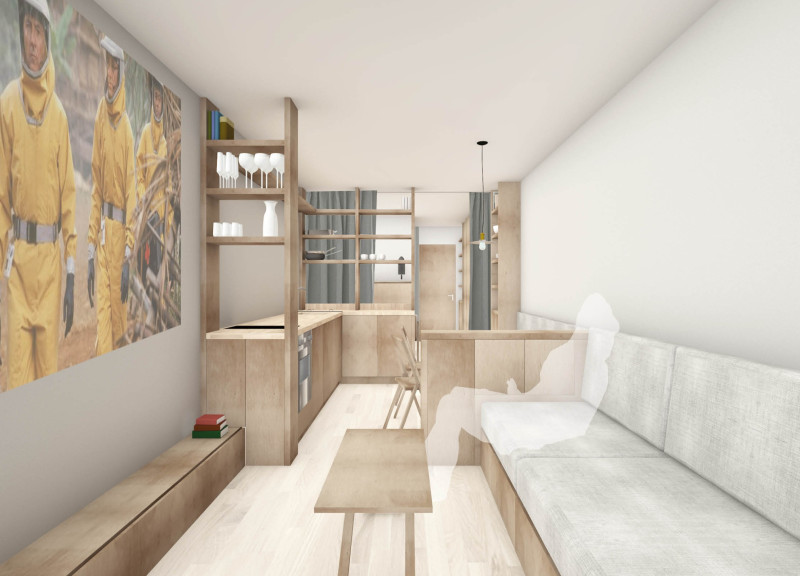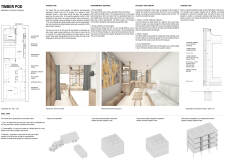5 key facts about this project
The Timber Pod functions as a modular living unit designed to respond to the challenges presented by urban population growth. Positioned within the context of increasing city densities, it offers a practical living solution that is both cost-effective and environmentally friendly. The design concept emphasizes efficiency and adaptability, creating a compact space tailored to the needs of modern urban residents.
Materiality and Sustainability
Cross Laminated Timber (CLT) is the primary material used in the construction of the Timber Pod. This choice of material is significant because it not only ensures structural support but also highlights a focus on sustainability. CLT allows for the use of fast-growing trees, which absorb carbon more quickly than older trees. This approach helps lower the project's overall carbon footprint. The timber is sourced from well-managed forests in the Northern Hemisphere, reinforcing the principles of responsible materials management.
Spatial Organization
The layout incorporates various functional zones, including areas for living, cooking, and sleeping. At just 25 square meters, the floor plan maximizes space while providing convenient movement throughout the unit. The entrance opens into a bedroom area, which features an en-suite bathroom and smart storage solutions such as sliding doors and compartments under the bed. This design effectively meets the demands of small-space living, ensuring that each area serves its purpose efficiently.
Adaptive Features
Versatility is a key aspect of the Timber Pod's design. The kitchen area includes a long worktop that hosts necessary appliances and a dining table for up to five people. This arrangement supports both meal preparation and informal gatherings. The living space is designed to accommodate guests with a bed that can be adapted, reflecting the realities of urban life where flexibility is vital.
Energy Efficiency
The Timber Pod integrates renewable energy through solar panels placed on the roof. These panels can rotate to capture sunlight more effectively, adjusting to changes in weather. This feature improves energy efficiency, especially during different seasons. Such design choices promote sustainability, allowing the unit to achieve greater energy independence within an urban environment.
With a clear focus on practical living, the Timber Pod showcases a thoughtful arrangement of spaces and functional details that address both occupant needs and environmental concerns. The design exemplifies how compact living can merge comfort with sustainability, making it a relevant model for urban housing solutions.



















































